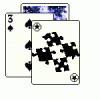accuracy bars - quick question
Well my Google-Fu has failed me, so I'm turning here as the next resort....
Was wondering if anyone knows of any articles/resources discussing the use of old school golf game style accuracy bars as a simple skill based input system?
As background: I've been fleshing out a turn based dungeon crawler idea and I thought rather than just attacking and using maths to denote hit probability, why not fold in a really quick minigame? Factors still apply (hit bonuses increase success range; target's defense increases speed of the bar) but it moves a bit of the skill to the player, especially when defending.
However, I can foresee a few issues with this in terms of player skill progression, possibly slowing things down, balancing problems, maximum reaction speed....etc etc. Obviously, I don't know how impactful (or not) this might be, so was hunting for some discussions that might have already been had online.
Any links would be really helpful.
Thanks everyone...
I don't have an article for you, but do have a suggestion: prototype it. I imagine that a basic version of this system could be implemented fairly quickly, allowing you to try out your mechanic, and further, to get outside feedback on it.
If I may, one quick idea that might be worth trying: when defending, having the target move according to the enemy's intended hit (a blow coming from the player's right being represented on the right, for example)--that might make the result both a little more dynamic and a little more connected to the combat that it's intended to represent.
MWAHAHAHAHAHAHA!!!
My Twitter Account: @EbornIan
As Thaumaturge suggested, put together a prototype and test it out. Some of the challenges that you'll face might become more obvious.
If you haven't already thought of it, the accuracy bar doesn't have to be only relevant for a single round of combat. The accuracy bar could be there for the duration of combat with multiple target zones for opportunities to attack or defend against one or more opponents. Possibly requiring one button or key to be pressed for an attack and another for defense. Combat could actually have the potential to occur fairly quickly.
When it comes to balancing, I think you'd be looking at more or less the same sort of calculations that you would if combat was turn based but perhaps with a larger allowance for player mistakes
Thaumaturge:
In response to the second part - That sort of idea was rolling around in my head somewhere. I think it might have been one of the Pro Evo games that, when you had to save a penalty, a little mini-game popped up where you had to cover the opponents targeting reticule with blue square denoting the area of the goal you could cover, and the size was based on (I think) the calculation between the goalkeeper and striker's relative abilities. It was an attempt to make a functionality more realistic to the event happening in game. My initial idea was simply something like the aim ring system in Lost Odessey, and a simple shrinking shield icon you had to stop within a specific range (again, speed and target size dependent on relevant stats - Two Worlds 2's lockpick mini-game is also a good example of difficulty based on relevant stats). But yes, as I've built the idea in my head, more stylistic integrations have popped up (immediately writes down direction of attack into idea journal).......Ahem...
Kseh
The original game structure - mechanically - was based on dice randomisation. This sort of golf shot input was a way of replacing it. I mean it's not beyond the real of possibility to break golf down into a dice mechanic. Take a d10, actually 2 d10's (power and accuracy). Picking the right club gives you a bonus accuracy, different clubs give boosts to range, the lie of the ball applies negative values to both. So starting at a 5 or more for a clean hit, your target figure on the accuracy dice moves according to difficulty, and you power dice affects additional range - suddenly club choice for a bunker shot becomes very important. You hang everything on accuracy and screw the power. But golf games don't roll dice, because they want to hand the skill to the player to remove the randomness of a dice roll. This is the same process. When the game would normally require a dice roll, you take a golf shot instead. I envisage it being a quick thing (again, see the aim ring system) that occurs often during combat, because it replaces the typical random mechanic.
Both - thanks for the replies
In respect to the modelling - the data is sort of already there. I played basic golf games a lot when I didn't have a decent PC - and on the megadrive (ahhh PGA tour golf). I know I improved, affecting my ability to "win" more. While this did make the game a bit less of a challenge as I got better at using the accuracy bar, I also got the enjoyment of improving my skill. However, this wasn't a competitive game really (in the sense that my good shot negated another player's good shot). My worry is, is there a skill curve whereby it's reasonable to assume a player becomes able to "always" hit and "always" defend - and in a tactical turn based game, would the reliance fall too much on reactions, and not on the tactical choices being made (i.e. would leveling or getting better equipment/skills become an irrelevance).
In golf, it's relatively simple to set these things - on the skill curve you take an arbitrary point (say where you are likely to shoot par based on your skill), and base the competitive elements around that. However, golf relies very little in terms of tactics (Generally speaking, aiming at the pin and picking a club with about the right power range will be all you need to do other than click well). Chess would be a very different game if your pieces had to roll to take other pieces - chess has no random elements. However, if you introduced an accuracy bar to taking and blocking chess pieces - would there be an inherent endgame at the top of the skill curve where you'd just march your pawns forward, knowing you were unlikely to be taken, and unlikely to be blocked from taking. And therefore would you have to fold in practical impossibilities to compensate, essentially reverting the game back to a random result because stopping an accuracy bar on precisely 100/100 would only occur 1 time in a hundred due to the difficulty?
Anyways, I'm sliding off point. That's why I was after some commentary on the inherent issues with accuracy bars - what are the mechanical pitfalls when someone is essentially able to load their own dice (through skill)? Is there already data to suggest that when people hit their skill limits they lose interest? Do people want measurable static effects in tactical Turn based games (like chess) rather than random/skill elements in something like Bloodbowl?
I appreciate I've may have gone waaaaaaaaaaaay too deep.......apologies for that.
LucasArts made a game called Gladius that merged an accuracy bar with a tactics-rpg, it was really fun as I remember.
*Squee! An opportunity to show off!* ![]()
Those bars are now usually called 'action tests' when they are used for other non-golfing mechanics, and, in my opinion, are closely related to quick-time-events (QTEs) - though visually different, mechanic-wise they are really similar.
Gears of War used an action test during reloads to give yourself an instant-reload if you get the action-test right.
SpyParty, a really enjoyable indie game, uses action tests when playing as the spy to make the spy's actions more visually subtle. If you ignore the test, you automatically get a "normal" action. If you do the test and succeed, you get a more-subtle action, and if you do the test and fail, you get a much more overt action. This lets more experienced players opt in for more risk but also the chance at a better result. It works out very well. See the developer's write-up here and the followup here.
Anyways, I'm sliding off point. That's why I was after some commentary on the inherent issues with accuracy bars - what are the mechanical pitfalls when someone is essentially able to load their own dice (through skill)? Is there already data to suggest that when people hit their skill limits they lose interest? Do people want measurable static effects in tactical Turn based games (like chess) rather than random/skill elements in something like Bloodbowl?
I think it's fine, even in a tactical turn-based game, but think there's a often point at which it ceases to be fun in itself -- once you can hit the bullseye every time. But if it's not *arduous* to do so, there's no harm in it. The Mario RPG timed attacks become second nature after a while, when your muscle memory takes over. (Whereas a long attack sequence like those in Legend of Dragoon will probably become tedious.)
My main mechanical concern, though, is more about progression, that in many timer-based RPGs your timing skill improves to "as good as it gets" long before the game's done, and then there's a lot of time your skill isn't improving further. Since attacking is pretty much these games' tightest interaction loop, that can mean a LOT of time spent on an activity you're not improving at.
That's not to say "don't do it", just to give it the same thought as any other in-game progression and have there be opportunities for more-skilled players to keep improving. For example, maybe each weapon has a distinctive "gradient", and there are weapons available that do lots of damage but have a *very* tight success window. The player isn't forced to get better, but they have the choice. Maybe you can even "dual wield" if you're skilled enough. (And maybe there are weapons that don't do this at all, so that players with no interest in timing tests have an option that avoids it.)
Well. Oh dear. It looks like I've managed to completely independently recreate the game system from Gladius 11 years later. Right down to the power meter to spend on better attacks. Looks like there truly are no new ideas.
Oh well, back to the drawing board.......
Cheers everyone for your comments..
That fact that someone else has already done it doesn't mean that you can't--we don't have just one game that involves first-person shooting, and one that involves die-rolling to determine the success of actions, etc., after all.
This seems as though it could be an interesting combat mechanic; indeed, the fact that it's been attempted before gives you a previous model to look at, and CCH Audio's comment about it indicates that the mechanic can be fun. One thing to look for might be critique of that game as a source of inspiration for opportunities to improve upon the mechanic as implemented there.
With regards to the player's skill exceeding the game's challenge, you might look for ways in which to keep increasing the challenge as the player faces new foes--but first, I again suggest prototyping in order to determine whether that really does happen in your implementation.
May I make another gameplay suggestion? (This really is an interesting idea.) Kseh suggested having two bars; let me build on that a little:
As suggested, have two bars: defence and offence. Each has a constantly-moving marker, and is associated with a different key or button (left- and right- shift, for example).
When the opponent attacks, a region appears in the defence bar as you've described, and the player is required to press the defence button when the marker next moves into that region; missing that opportunity results in the player taking damage. (You might also experiment with scaling the damage according to the player's performance: hitting the button at just the right time results in no damage, while being a little bit off results in the damage being merely reduced in proportion to the player's closeness to hitting the mark.)
The attack bar presents opportunities to the player, creating transient regions for the player to hit. Each marker is an opportunity to deal damage--but attacking cancels any defensive regions, causing their damage to go through automatically. Thus each attack incurs the risk of missing a defensive region and taking damage.
Difficulty can be scaled by increasing the speed of the markers, the size of the regions, and how often the regions are presented. Particularly dangerous foes might even at times produce more than one defensive region per attack, potentially catching players out.
MWAHAHAHAHAHAHA!!!
My Twitter Account: @EbornIan
I was actually thinking of one bar with say left click being an attack and a right click being defend. I'm also thinking that maybe the bar could represent your body or the area in front of you. So if you were to see an incoming attack aimed at the center and this area represents your head, maybe you want to put a greater effort at defending against that strike than trying to go for an opening which appears at the same time.
what are the mechanical pitfalls when someone is essentially able to load their own dice (through skill)? Is there already data to suggest that when people hit their skill limits they lose interest? Do people want measurable static effects in tactical Turn based games (like chess) rather than random/skill elements in something like Bloodbowl?
I'm not entirely convinced that combat is as reliant on randomization as people might think. It seems to me that when fighting a particular creature you can consistently find that it takes x hits plus or minus 1 to defeat it. In general you want the player to walk away but having taken approximately y% amount of damage. And after having been in z number of battles you expect the player to require healing in order to safely proceed. And then repeat. It doesn't matter too much if the enemy has 10 life points or 100 the pattern can be expected to be pretty consistent for non-boss battles. I don't think that plus or minus 1 really adds much beyond just a bit of an illusion that the combat unfolds differently each time.
This "action test" mechanic (as Servant called it) does require that the player actively participate with a certain level of twitch skills but I think you can probably expect the player to eventually fall into a similar formulaic pattern and use that to determine how you want to balance things. In this case though the plus or minus one is the proximity to the center of a target range which the player may consistently get close to may still get tired or have the occasional slip. You would still need to find ways to make the combat a bit more varied as you encounter different creatures but you would do this anyways with a turn based combat system when you decide that one creature will poison you, this other one is weak to some elemental attack, this other one always summons help and keeps them healed, etc. Actually, you could probably make those exact same variances work using this action test mechanic.









